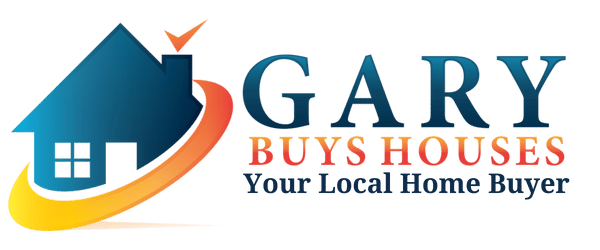If there’s anything to be said about real estate, it’s that terminology can frequently be obscure. So obscure, it can seem practically indecipherable sometimes.
Take a wraparound loan or wraparound mortgage, for example. It may sound like a fairly esoteric term, but it’s actually quite common. With the increased popularity of seller/owner financed loans, you may find yourself coming across the term. But just what is a wraparound mortgage? How does it benefit you? How easy is it to obtain? And more specifically, what are some of its disadvantages?
If you’re a homeowner in Utah who is considering selling your home through owner financing, here’s what you should know about wraparound mortgages.
What Is A Wraparound Mortgage?

There’s several definitions of a wraparound mortgage. In seller financing, it refers to a junior mortgage used to secure the sale of a property. During a wraparound mortgage, a seller takes the place of a conventional lender by financing a second mortgage on a property and selling it to buyers who typically have less than perfect credit. A buyer pays a monthly mortgage installment, just like they would through a bank. Only it’s paid directly to the seller, plus interest. Typically, it consists of any balance due on the original mortgage plus additional fees and is secured through a promissory note which legally binds the buyer to the agreed monthly amount. Unlike a second mortgage, it “wraps around” the original agreement at an increased cost. Once the initial mortgage is paid off, the deed and title to the property is transferred to the buyer.
Why is this beneficial for homeowners? Well, they can nominally increase monthly interest rates for one. Sellers who may have multiple properties (or even find themselves in circumstances where a single property simply isn’t worth the upkeep) are guaranteed a monthly cash stream plus an additional profit—anywhere from two percent upwards. Most frequently, sellers can increase interest rates based on a buyer’s credit risk. The lower the rating, the higher the interest could hypothetically be.
Wrap Around Mortgage Risks
And now I’ve outlined the top 7 risks to consider when engaging in a wrap around mortgage below for you:
- Due-on-Sale Clause Activation – The existing mortgage on the property may contain a due-on-sale clause, which allows the lender to demand full repayment of the loan if the property is sold. If the lender discovers the wrap around mortgage arrangement, they may choose to exercise this clause, potentially leaving the buyer in a difficult financial situation.
- Default Risk – If the buyer fails to make timely payments on the wrap around mortgage, the seller may still be responsible for the underlying mortgage. This puts the seller at risk of defaulting on their own loan if they are unable to cover the payments.
- Financial Instability of Buyer -The financial stability of the buyer is crucial in a wrap around mortgage. If the buyer experiences financial difficulties and is unable to meet their payment obligations, the seller may face challenges in resolving the situation and could potentially face foreclosure.
- Title and Ownership Issues – With a wrap around mortgage, the buyer does not obtain clear title to the property until the wrap around mortgage is fully paid off. This can lead to potential complications in case of disputes or legal issues related to ownership.
- Insurance and Tax Concerns – The seller, as the holder of the original mortgage, may remain responsible for property taxes, insurance, and any other obligations associated with the property. If the buyer fails to fulfill these obligations, it can negatively impact the seller’s financial standing and potentially lead to legal complications.
- Market Fluctuations – Wrap around mortgages are influenced by the overall real estate market. In the event of a market downturn, the property value may decrease, potentially leaving the buyer owing more on the wrap around mortgage than the property is worth.
- Lack of Control – As the seller, you may relinquish control over the property until the wrap around mortgage is paid off, as the buyer holds equitable title. This lack of control can be risky if the buyer fails to maintain the property or violates any terms of the agreement.
Is A Wraparound Mortgage Legal?

Yes. But that doesn’t stop the fact that many homeowners may find difficulty finding many lenders who will agree to one. In fact, scrutiny about credit risk is even greater for buyers looking at a wraparound mortgage than if they were looking at a standard one. If a buyer has difficulty securing a traditional mortgage, then they’ll face even more difficulty if a bank finds out they’ve secured one through a second party.
With a wraparound mortgage, lenders are looking at both your ability to repay as well as that of any prospective buyer. You may have a history of responsible payments. But does a buyer? What does their work history look like? What about their prospects for paying off their loan as well as the increased interest? What assets do they currently hold which can justify a mortgage? Remember that a wraparound mortgage is as much your responsibility as a buyer’s. And should they default, you’re still responsible for payments on your initial mortgage—in some cases, with additional penalties.
How Does a Wrap Around Mortgage Work
There are 5 major steps you should be aware of on understanding how a wrap around loan works. I’ve outlined and simplified this process for you:
- Buyer and Seller Agreement: The buyer and seller agree on the terms of the wrap around mortgage, including the purchase price, interest rate, and payment schedule. The buyer makes monthly payments to the seller, who then uses a portion of those payments to cover the underlying mortgage on the property.
- Buyer’s Payments: The buyer’s monthly payments to the seller typically consist of two parts: the interest on the wrap around mortgage and the principal repayment. The interest rate on the wrap around mortgage is usually higher than the rate on the underlying mortgage, allowing the seller to earn a profit.
- Seller’s Existing Mortgage: The seller remains responsible for the existing mortgage on the property. They continue to make regular payments on that mortgage using the buyer’s payments from the wrap around mortgage.
- Equitable Title: While the buyer does not receive legal title to the property until the wrap around mortgage is fully paid off, they hold equitable title. This means they have the right to occupy and use the property as their own.
- Risks and Considerations: It’s important for both parties to understand the risks involved in a wrap around mortgage. These risks include the activation of the due-on-sale clause, default by the buyer, and potential complications with ownership and control.
How to sell your house with wrap around loan
Example 1: Seller with Existing Mortgage
- Evaluate Financial Situation: Determine if selling the house via a wrap around mortgage is a suitable option based on your financial goals and circumstances.
- Research and Consult Professionals: Educate yourself about wrap around mortgages and their legal implications. Consult with a real estate attorney to understand the specific laws and regulations in your jurisdiction.
- Determine Sale Price and Terms: Set a fair sale price for your property and establish the terms of the wrap around mortgage, including interest rate, payment schedule, and duration. Consider seeking advice from a real estate agent or appraiser to determine an appropriate sale price.
- Find a Qualified Buyer: Market your property and seek a buyer interested in purchasing via a wrap around mortgage. Advertise the opportunity and consider working with a real estate agent experienced in wrap around mortgage transactions.
- Negotiate and Draft Agreement: Once a buyer is identified, negotiate the terms of the wrap around mortgage agreement. Engage the services of a real estate attorney to draft a legally binding agreement that protects the interests of both parties.
- Complete Necessary Documentation: Prepare the necessary paperwork, including the wrap around mortgage agreement, promissory note, and any other required legal documents. Ensure compliance with local regulations and consult with professionals to ensure accuracy.
- Transfer of Equitable Title: Upon completion of the agreement, transfer the equitable title to the buyer while retaining responsibility for the underlying mortgage.
- Monthly Payments: Collect monthly payments from the buyer and use a portion to cover the existing mortgage. Continue making timely payments to the underlying lender.
Example 2: Seller without Existing Mortgage
- Financial Assessment: Evaluate your financial situation and determine if selling via a wrap around mortgage aligns with your goals and circumstances.
- Property Valuation: Determine the fair market value of your property by seeking the expertise of a real estate agent or appraiser.
- Set Terms and Sale Price: Establish the terms and conditions of the wrap around mortgage, including the interest rate, duration, and payment schedule. Set a competitive sale price based on the property valuation.
- Marketing and Finding a Buyer: Advertise your property as a unique opportunity for buyers interested in a wrap around mortgage. Work with a real estate agent or utilize online platforms to attract potential buyers.
- Negotiate and Draft Agreement: Once a suitable buyer is found, negotiate the terms of the wrap around mortgage agreement. Engage a real estate attorney to draft a legally binding agreement that protects the interests of both parties.
- Prepare Documentation: Gather the necessary documentation, such as the wrap around mortgage agreement, promissory note, and other required legal paperwork. Ensure compliance with local regulations and seek professional guidance as needed.
- Transfer of Equitable Title: Transfer the equitable title to the buyer upon completion of the agreement, allowing them to occupy and use the property while you retain responsibility for the wrap around mortgage.
- Monthly Payments: Collect monthly payments from the buyer, applying a portion to cover the wrap around mortgage and ensuring timely payments to the underlying lender.
The Bottom Line
Like any other form of owner financing, wraparound mortgages carry both risks and advantages. If you’re lucky enough to find a reliable buyer, it can be an investment that gains a considerable profit; particularly if you’re considering retiring in the next few years. After all, with some of the recent changes to social security benefit payments, even your IRA alone might not be sufficient enough of a cushion over the next few years.
But the risks you take are the same as those facing any consumer lending institution: reliability and trust. Let’s just hope you make the right call.
We Buy Houses Using a Wraparound Mortgage
We purchase homes quite often using a Wraparound Mortgage from the seller. We can usually pay more for a property if the seller of a home allows us to keep their mortgage in place. We create a mortgage for the amount we have to pay the homeowner above the balance of their mortgage plus their current mortgage. We can usually pay more because we only need to secure financing for a much smaller amount of the purchase price, and the interest rate on the homeowner’s 1st mortgage is less than we can borrow money for.
We typically ask the home owner to leave their mortgage in place for 3 to 5 years until we get permanent financing or sell the property.
